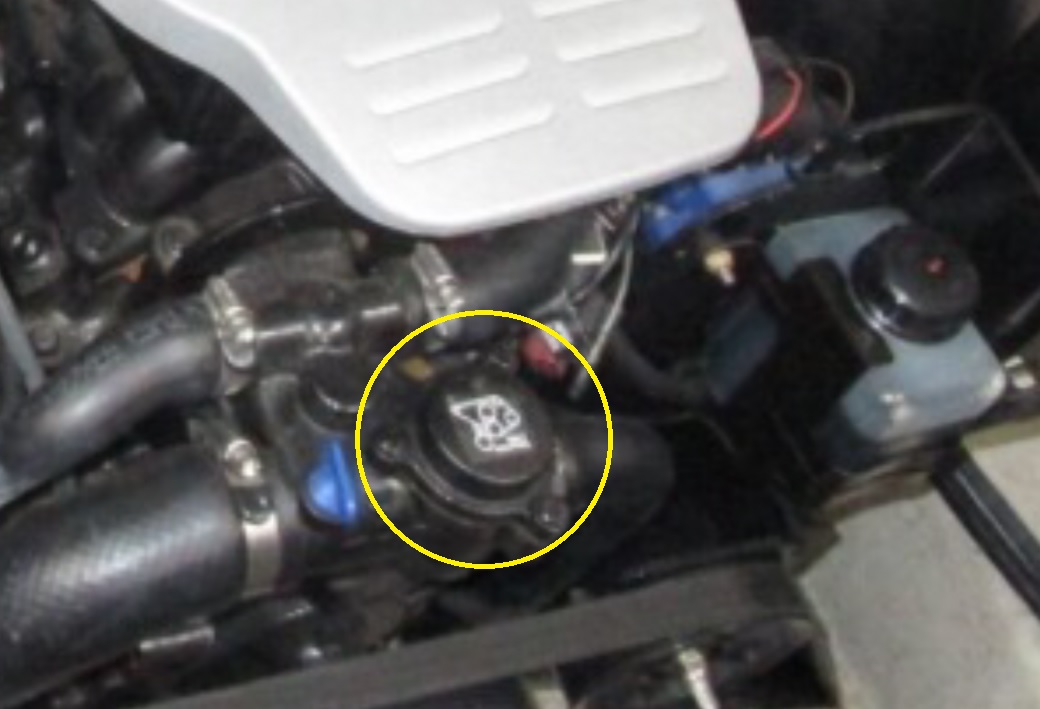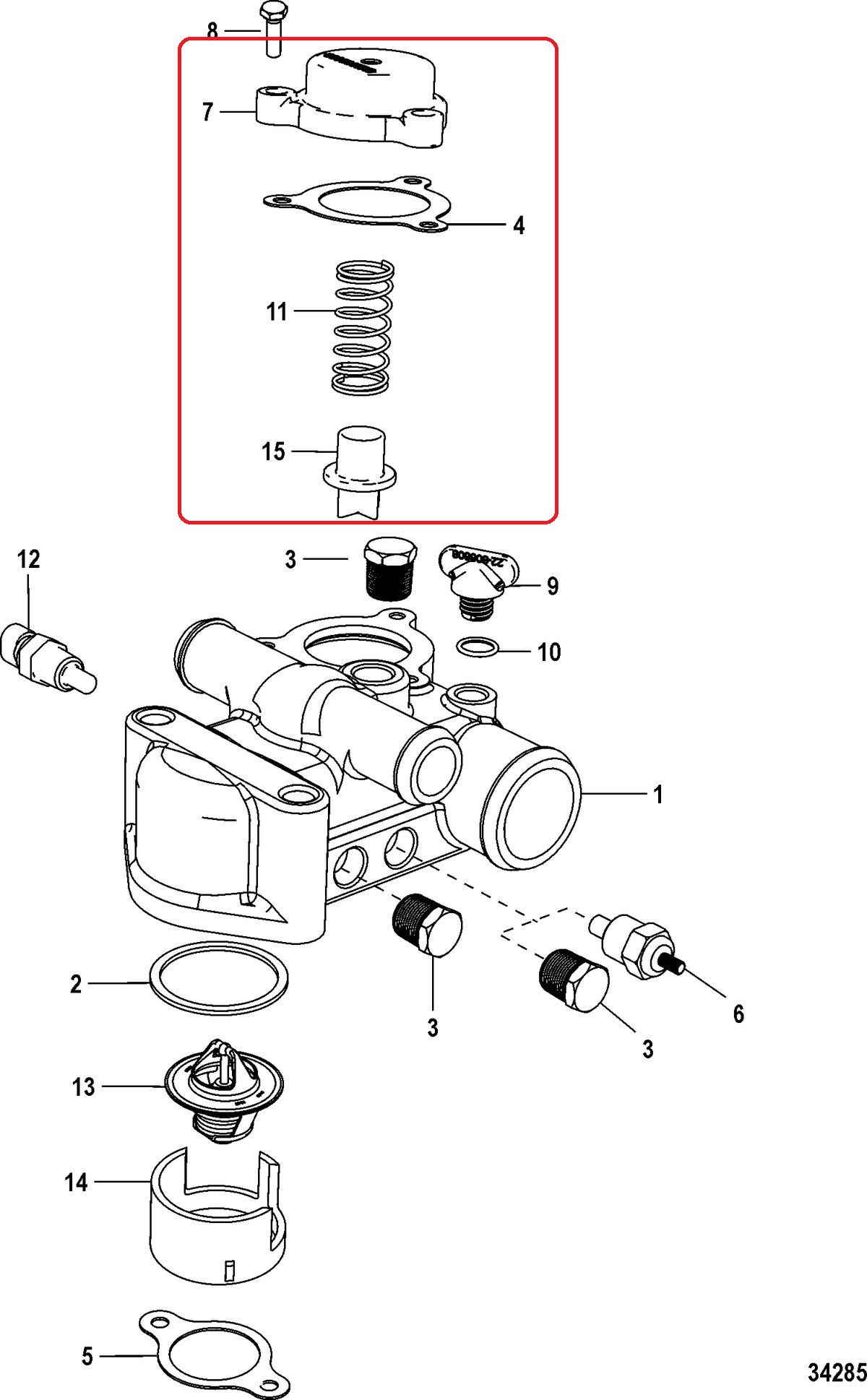Jeff Copeland
New Member
- Oct 3, 2020
- 5
- Boat Info
- 2011 Sea Ray 220 Sundeck
- Engines
- 5.0L Mercruiser
I wanted to share an issue I've spent a couple of weeks and a lot of money troubleshooting (and puling my hair out over!), in hopes that it helps someone else out there having a similar problem (and I actually found these forums extremely helpful when troubleshooting this and other issues, so wanted to give back):
After doing some research, I replaced the raw water pump with an aftermarket stainless steel Hardin seawater pump (which I am very impressed with, by the way, and can confirm it works fine on the 5.0 MPI. Although the site states it's for a 350 MAG and other applications, many of the raw water cooling system components are the same). I especially liked not having to press the pulley off the old pump and back on the new one.
New raw water pump did not fix the problem or even help.
After further research, I found several instances of the water circulating pump brass impeller cracking or spinning on its hub in these engines, so I replaced the circ pump as well.
New water circulating pump did not fix the problem or even help.
(Side note: I was happy to replace these as preventive maintenance anyway, since they were original to the boat and over 10 years old, but I was truly stumped each time they didn't help because I was convinced there wasn't much else it could be!).
So at this point I was stumped. I had good water flow, no overheating, but a low water pressure alarm that was driving me crazy.
Then I stumbled upon a post in these very forums by @Seapig (Thank You Sir!) referencing the poppet valve in the thermostat housing. In many hours of researching this low water pressure problem, this was the only reference I found to the poppet valve on a 5.0 MPI.
It is located under the housing with the serpentine belt routing sticker and is held on by three bolts (credit to @Seapig for the photo, I added the circle):

It is essentially a pressure release valve, designed to bleed off some of the water pressure at high RPMs. It is very simple, and consists of a spring that is seated in the top housing (underneath the belt routing sticker) that presses a plastic "piston" (#15) down onto a seating surface:

In my case, the assembly wasn't exactly "stuck open", and the spring wasn't broken, but enough corrosion and scale had accumulated that it was allowing raw water to blow by freely.
What this meant was:
My raw water pressure immediately shot up to where it should be: 2-3 PSI at idle and 12-14 PSI at 3000-4000 RPMs, and I'm running at 161 degrees at cruising speeds (which makes much more sense on a 160 degree stat). So I'm reasonably confident the demon has been exorcised!
Some other helpful nuggets I learned along the way:
- 2011 Sea Ray 220 SD, Mercruiser 5.0 MPI Bravo III, Raw Water Cooled with 310 hours
- Low water pressure alarm and occasional guardian mode at low rpms, alarm generally cleared by giving it some throttle, increasing RPMs a little.
- Verified water pressure read out with 0-15 PSI manual pressure gauge on a tee at the power steering cooler. It was in fact low (hovering between 0 & 1 PSI at idle), so the water pressure sensor (another common suspect) was not the culprit.
- Never got an alarm while running on a plane or even clutch ahead, only when coming back to idle, and boat never overheated. In fact, it ran at about 158 degrees max (which in retrospect I thought was a little weird since it has a 160 degree thermostat, but I always chalked that up to a couple of degrees sensor/gauge error).
- Thermostat and impeller less than one year old.
- It would generally be fine (around 1 PSI at idle, and 8-9 PSI at 3000 RPM - a little low, but not low enough to set off an alarm) at start up, and the problem was more likely to present after running for a while, stopping for a while with engine off, and then starting back up.
- Outdrive was off for rebuild 1 year ago, so I was confident there was no obstruction or "bravoitis"
After doing some research, I replaced the raw water pump with an aftermarket stainless steel Hardin seawater pump (which I am very impressed with, by the way, and can confirm it works fine on the 5.0 MPI. Although the site states it's for a 350 MAG and other applications, many of the raw water cooling system components are the same). I especially liked not having to press the pulley off the old pump and back on the new one.
New raw water pump did not fix the problem or even help.
After further research, I found several instances of the water circulating pump brass impeller cracking or spinning on its hub in these engines, so I replaced the circ pump as well.
New water circulating pump did not fix the problem or even help.
(Side note: I was happy to replace these as preventive maintenance anyway, since they were original to the boat and over 10 years old, but I was truly stumped each time they didn't help because I was convinced there wasn't much else it could be!).
So at this point I was stumped. I had good water flow, no overheating, but a low water pressure alarm that was driving me crazy.
Then I stumbled upon a post in these very forums by @Seapig (Thank You Sir!) referencing the poppet valve in the thermostat housing. In many hours of researching this low water pressure problem, this was the only reference I found to the poppet valve on a 5.0 MPI.
It is located under the housing with the serpentine belt routing sticker and is held on by three bolts (credit to @Seapig for the photo, I added the circle):

It is essentially a pressure release valve, designed to bleed off some of the water pressure at high RPMs. It is very simple, and consists of a spring that is seated in the top housing (underneath the belt routing sticker) that presses a plastic "piston" (#15) down onto a seating surface:

In my case, the assembly wasn't exactly "stuck open", and the spring wasn't broken, but enough corrosion and scale had accumulated that it was allowing raw water to blow by freely.
What this meant was:
- At start up (thermostat closed, poppet open), the problem was barely evident.
- While running (thermostat open, poppet open), the boat was running just a little bit cool (158 on a 160 thermostat) because raw water was bypassing the thermostat via the poppet.
- After shutting down for a while and allowing the engine to "heat sink", and restarting with both the thermostat and the poppet open, the raw water pressure was too low at idle and would trip the alarm and guardian mode until the pressure came up with RPMs.
My raw water pressure immediately shot up to where it should be: 2-3 PSI at idle and 12-14 PSI at 3000-4000 RPMs, and I'm running at 161 degrees at cruising speeds (which makes much more sense on a 160 degree stat). So I'm reasonably confident the demon has been exorcised!
Some other helpful nuggets I learned along the way:
- The seawater/raw water pump is a bear to replace in the boat. I seems impossible, but it's not. I found it necessary to remove the idler pulley bracket, alternator, and cool fuel module just to access the pump and hoses. Removing these isn't as hard as it sounds, and it's best just to bite the bullet and get everything out of the way (of course this will vary from boat to boat - if you have room to access it, consider yourself lucky).
- The water pressure sensor is at the back of the engine, on top, to the left as you face aft (stbd side), and is installed to the left as you face aft (stbd) side of the power steering cooler. If you put a life jacket on top of the spark arrestor and lay on top of the engine between the risers, it's reasonably easy to access, and my connector was labeled, making it easy to verify:

- The power steering cooler where the sensor screws in is just 1/8 NPT threads, so it's very easy to screw in a T-fitting and add a manual gauge to visually verify your water pressure and troubleshoot the sensor. I used this stainless T-fitting and this 0-15 PSI pressure gauge and the setup works well.
- I'm actually surprised this is not a more commonly known maintenance item (maybe it is and I just missed it?). Seems at the very least it should be disassembled and cleaned every couple of years when you do an impeller change!
- When you remove it, you are required to say "Hello, Poppet" in an English accent (Pirates of the Caribbean reference, lol).
Last edited:



